On January 25, nonresident senior fellow Steven Pifer took part in an exchange of views on the Intermediate-Range Nuclear Forces Treaty with the European Parliament’s Subcommittee on Security and Defense. The following is the text of the written statement that he submitted for that session.
Madame Chair, distinguished members of the European Parliament,
Thank you for the invitation to take part in this exchange of views on the Intermediate-range Nuclear Forces (INF) Treaty and to join my distinguished co-panelists, Jacek Bylica and William Alberque. Let me note at the start that I am a nonresident scholar with the Brookings Institution but appear as an individual and do not represent or speak for the Brookings Institution. I will discuss the future of the INF Treaty, including the U.S. government’s response to the Russian violation, the possible ramifications of a collapse of the treaty, and steps that might be taken to address each side’s compliance concerns, if there is the political will to do so.
Introduction
Ronald Reagan and Mikhail Gorbachev signed the INF Treaty in December 1987. The treaty banned all U.S. and Soviet ground-launched ballistic and cruise missiles of intermediate range, that is, ranges between 500 and 5,500 kilometers. The treaty entered into force in mid-1988. Three years later, some 2,700 U.S. and Soviet intermediate-range missiles had been destroyed. After the Soviet Union collapsed in late 1991, Russia took on the Soviet obligations, as did several other post-Soviet states.
In 2014, the Obama administration stated that Russia was “in violation of its obligations under the INF Treaty not to possess, produce or flight-test a ground-launched cruise missile (GLCM) with a range capability of 500 km to 5,500 km, or to possess or produce launchers for such missiles.” Press reports at the time indicated that the U.S. government had detected Russian tests of a prohibited intermediate-range GLCM.
The Obama administration sought to bring Russia back into compliance with the INF Treaty. Administration officials said that the United States would take steps to ensure that Russia gained no significant military advantage and outlined three kinds of responses: active defenses against cruise missiles; counterforce capabilities to strike those missiles; and countervailing strike capabilities to otherwise enhance U.S. and allied forces. The actual steps pursued, however, looked similar to measures that the Obama administration was taking under its “European Reassurance Initiative” in the aftermath of Russia’s seizure of Crimea.
The Obama administration did not succeed in bringing Russia back into compliance with the INF Treaty. Press reports in early 2017 indicated that Russia had begun deploying the GLCM. In March 2017, General Paul Selva, vice chairman of the Joint Chiefs of Staff, stated, “We believe that the Russians have deployed a land-based cruise missile that violates the spirit and intent of the [INF] Treaty.” He added that the missile presented a threat to most U.S. military facilities in Europe.
The Trump Administration’s Response
In 2017, the Trump administration conducted a review of the INF Treaty in light of the continuing Russian violation. U.S. officials identified the missile in question by the Russian designator 9M729 (the missile has the U.S. designator SSC-8). Russian officials have acknowledged a missile with that designator but assert that the missile does not have an intermediate range capability. U.S. officials have continued to consult with NATO on the Russian violation (such consultations go back to 2014).
On 8 December 2017, the 30th anniversary of the signing of the INF Treaty, the Trump administration stated that it remained committed to the treaty but considered “untenable” a situation in which the United States continued to comply with the treaty while Russia violated it. The administration announced an “integrated strategy” of diplomatic, military and economic steps to bring Russia back into compliance and to ensure that Russia would secure no military advantage should it continue its violation. Those measures include:
- Diplomatic efforts to find a solution to the violation. These include work through the Special Verification Commission that was established by the INF Treaty to provide, among other things, a venue for resolving questions of treaty compliance.
- A military research and development program to examine concepts for a U.S. conventionally-armed ground-launched intermediate-range missile. Congress in the National Defense Authorization Act authorized $58 million to respond to the Russian violation, including by developing an intermediate-range GLCM. The INF Treaty permits research and development, as long as development stops short of flight-testing, which is banned. The administration stated that it would terminate this research and development if Russia returned to full compliance with the INF Treaty.
- Economic measures against Russian entities that were involved in developing and producing the 9M729.
The Russian government reacted negatively to the Trump administration’s announcement, reiterating past claims that Russia was not in violation of the INF Treaty and repeating earlier charges that U.S. actions had violated the treaty.
Since the Trump administration announced its approach, the Special Verification Commission met 12-14 December, but neither U.S. nor Russian officials have indicated any progress from that session. On 20 December, two Russian entities, the Novator Design Bureau and Titan Central Design Bureau, were placed on a sanctions list.
Apart from the administration’s December announcement, a leaked copy of the Nuclear Posture Review indicates that the Pentagon intends to revive a nuclear sea-launched cruise missile (SLCM). Nuclear SLCMs once were part of the U.S. Navy’s arsenal, but all such missiles were withdrawn from U.S. warships and submarines in the early 1990s, following a decision by President George H. W. Bush. The Obama administration in 2010 announced retirement of the SLCM warheads, which had been kept in storage. The leaked copy of the Nuclear Posture Review ties the new SLCM in part to Russia’s violation of the INF Treaty, stating that it provides “an INF-Treaty compliant response to Russia’s continuing Treaty violation.” It adds, “If Russia returns to treaty compliance, reduces its non-strategic nuclear arsenal, and corrects other destabilizing behaviors, the United States may reconsider the pursuit of a [nuclear] SLCM.”
Assessment of the Response
I personally agree with the diplomatic and economic measures announced by the Trump administration and believe that military countermeasures are also necessary. I am less certain, however, about the wisdom of these specific military responses.
If the United States is indeed prepared to build and NATO is prepared to deploy in Europe a new intermediate-range ground-launched cruise or ballistic missile, that could certainly affect calculations in Moscow. Indeed, it was NATO’s commitment to proceed with deployment of U.S. GLCMs and Pershing II ballistic missiles in the early 1980s—despite immense public opposition—that brought a change in the Soviet approach. That resulted in the conclusion of the INF Treaty banning all intermediate-range missiles.
However, there are several questions about the Trump administration plan.
First, while initial research and development may not be that expensive, a serious development effort and, ultimately, production of a new ground-launched intermediate-range missile would run into the billions of dollars. This would come at a time when the U.S. defense budget already faces difficult choices among competing priorities.
Second, the Russian treaty violation is ongoing now, but fielding a new ground-launched intermediate-range missile, if it was funded, would take years to accomplish.
Third, a U.S. ground-launched intermediate-range missile would only concern Moscow if it were capable of reaching Russia. That would require basing the U.S. missile in Europe or Asia, but it is not apparent that NATO—or allies in Asia such as Japan or South Korea—would agree to such a deployment. U.S. ground-launched intermediate-range missiles based at Ft. Sill, Oklahoma would not worry the Kremlin much.
As for a new nuclear SLCM, that also will take money and time to field. Moreover, because the Trump administration has conditioned its possible reconsideration of the SLCM on factors other than just Russian compliance with the INF Treaty, it may not have the desired effect of incentivizing a Russian decision to return to compliance.
There should be a U.S. military response to Russia’s violation, with the initial goal of seeking to persuade Moscow to come back into compliance, but there are options that are cheaper, faster and likely more acceptable to NATO allies. Specifically, the U.S. Air Force could locate conventionally-armed Joint Air-to-Surface Standoff Missiles (JASSMs) at RAF Fairford, a British airbase that can support U.S. strategic bombers, and temporarily deploy B-1 or B-52 bombers there. The U.S. Navy could send warships carrying conventionally-armed SLCMs more frequently into northern European waters. An extended cruise in the Norwegian and North Seas by the USS Florida, a converted ballistic missile submarine that now can carry up to 154 conventionally-armed SLCMs, would get the Russian military’s attention. The Pentagon, however, has made no announcement regarding steps.
Europe’s Silence
For an American, the silence of European governments about the 9M729 and Russian violation of the INF Treaty is striking. The 9M729 will not be able to attack targets on U.S. territory (unless it is deployed in places where the Russians have not deployed such missiles in the past, in which case it might be able to reach parts of Alaska). The 9M729 was designed, tested and built to strike targets in Europe and Asia. There is thus far little evidence, however, that European leaders or governments have expressed concern about this threat, either publicly or directly to Russian officials.
NATO leaders at their 2014 and 2016 summits called for full compliance with the INF Treaty though in measured words; the summit communiqués did not use the term “violation.” On 15 December 2017, NATO issued a statement that expressed support for the INF Treaty and noted “serious concerns” about a Russian missile system but again did not use the term “violation.” Still, these statements are considerably more than most European governments have said.
Europe’s silence sends the wrong message to Moscow. It suggests that NATO and EU member states are not that worried about Russia’s violation of the INF Treaty or the new missile threat. Europe’s silence forgoes the opportunity to increase diplomatic and political pressure on the Kremlin. Given the state of U.S.-Russian relations, U.S. concern about the INF Treaty seems to have had little impact on Moscow. The Russian leadership’s view might change if it were to hear protests from other world leaders and came to see that the treaty violation has created a major political/diplomatic issue.
Europe’s silence also sends a bad message to Washington, where some have suggested that the United States should exercise its right withdraw from the treaty. If leaders in Europe do not vigorously protest the Russian violation, their desire to maintain the INF Treaty may not carry much weight with the Trump administration.
Effects of an INF Treaty Collapse
If the INF Treaty collapses—which I fear it will on its current course—it will have negative security consequences for Europe, the United States, Asia and Russia.
First of all, the end of the treaty would free the Russian military to openly deploy the 9M729 GLCM without any constraint. The Russians might decide, absent the treaty, to complement that with development and deployment of an intermediate-range ground-launched ballistic missile. If the funding could be found, the Pentagon might proceed to develop and produce a conventionally-armed intermediate-range ground-launched missile. As the United States proceeded down that path, it would invariably open a discussion within NATO about deployment of the missile in Europe.
The collapse of the INF Treaty, moreover, could affect the other major U.S.-Russian nuclear arms control agreement, the 2010 New Strategic Arms Reduction Treaty (New START). That treaty, whose limits take full effect on February 5, is set to expire by its terms in February 2021. It can be extended by up to five years.
Maintaining and extending New START would be a positive security step. However, it is not clear that there would be support in Washington for extending New START if the INF Treaty has collapsed or remains in effect with doubts persisting about Russian compliance. Senate Republicans, for example, proposed legislation last year that would have denied funds for any extension of New START unless Russia was in full compliance with the INF Treaty. That legislation was not adopted in 2017, but it may be proposed again in the future.
If the INF Treaty collapses and New START is not extended in 2021, that would mean that, for the first time in some 45 years, no treaty limits would constrain U.S. and Russian nuclear forces. The end of New START would result in a significant loss in transparency as the treaty’s data exchanges, notifications and inspections ended. The U.S. and Russian militaries would know much less about the other’s strategic forces and have to make worse-case assumptions, which would invariably lead to more expensive decisions about how to equip and operate their own strategic forces.
While, in the absence of New START, neither side might dramatically expand its strategic forces, there could be a gradual increase above New START’s levels. For example, the sides might decide to take strategic ballistic missiles that have been downloaded, that is, have had some warheads removed so that they carry less than their capacity, and load additional warheads back on those missiles.
Another concern is the impact on the nuclear non-proliferation regime. If the United States and Russia—which between them control some 90% of the world’s nuclear weapons—are no longer constrained by arms control agreements, how would that affect the effort to prevent other states from acquiring nuclear weapons? It would, at a minimum, undercut the ability of Washington and Moscow to press third countries to reduce their nuclear arsenals or not to acquire nuclear weapons.
China has built up its nuclear forces at a modest pace over the past 25 years, but it has done so in a context in which U.S. and Russian nuclear forces were limited by treaty. Would China act differently if it saw no constraints on the two nuclear superpowers?
A world in which U.S. and Russian nuclear forces are unconstrained would be less stable, less predictable and less secure.
Maintaining the INF Treaty
If the United States and Russia have the political will, there are ways to resolve their compliance concerns and maintain the INF Treaty.
U.S. and Russian experts in the Special Verification Commission could work out procedures under which the Russian military could exhibit a 9M729 missile and explain to American experts its performance characteristics, particularly as regards range. Steps could be taken to protect sensitive information unrelated to range. If the U.S. side was satisfied, the issue would be resolved. If, however, it was clear that the 9M729 could exceed 500 kilometers in range, all such missiles and their launchers would have to be destroyed in order for Russia to come back into compliance with the INF Treaty.
For its part, Russia has charged the United States with three violations of the treaty. Two do not appear to be serious. Russian officials claim that the U.S. military uses prohibited intermediate-range ballistic missiles as targets in its missile defense tests. However, Article VII of the treaty makes allowance for such uses. The Special Verification Commission could work out language to make clear the difference between prohibited intermediate-range ballistic missiles and missiles used as targets in missile defense tests.
The second Russian charge is that armed unmanned aerial vehicles (UAVs, often referred to as drones) are, in effect, ground-launched cruise missiles and thus banned by the treaty. When the INF Treaty was negotiated, neither side had armed UAVs. Moreover, there is a clear difference between a cruise missile—which is launched from Point A and travels to Point B where it detonates at a target—and an unmanned aerial vehicle—which is launched from Point A and travels to Point B, where it releases a weapon, before returning to recover at Point A or some other Point C. Here, too, the Special Verification Commission could work out language to make clear the distinction between prohibited intermediate-range cruise missiles and armed UAVs.
The third Russian charge seems more substantive. Russian experts assert that the Mk-41 vertical launcher systems for the Aegis Ashore SM-3 missile defense interceptors in Romania and to become operational this year in Poland violate the treaty. The basis for their charge is that Mk-41 vertical launch systems on board U.S. Navy warships carry a variety of weapons, including sea-launched cruise missiles, not just SM-3 interceptors. Experts could address this concern by working out observable differences, preferably functionally-related observable differences, for the Aegis Ashore launchers that would distinguish them from launcher systems on U.S. Navy ships. The sides might also develop—with the agreement of Romania and Poland—procedures under which Russian experts would periodically visit the Aegis Ashore sites, where they could choose two or three of the 24 launch cells to be opened to confirm they contain SM-3 interceptors.
The point of this discussion is that, if the sides wish to maintain the INF Treaty, they can find ways to resolve their respective compliance concerns.
Unfortunately, the INF Treaty is risk, and that could well undermine the broader U.S.-Russian nuclear arms control regime. Washington and Moscow should get creative and find ways to preserve the treaty. European governments need to make known their concern about the 9M729 and their views on the value of the treaty, which serves the security interests of the United States and Europe.
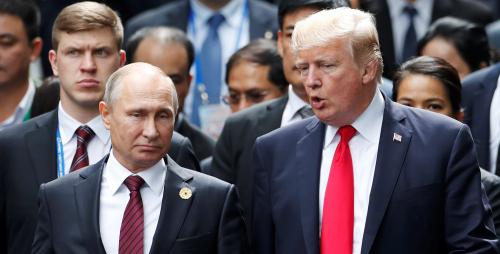
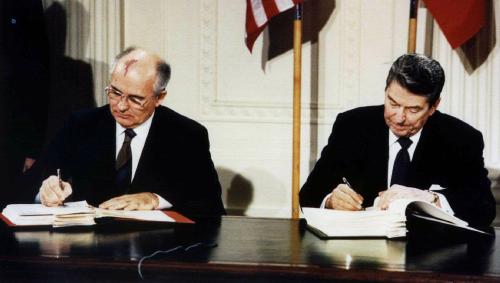
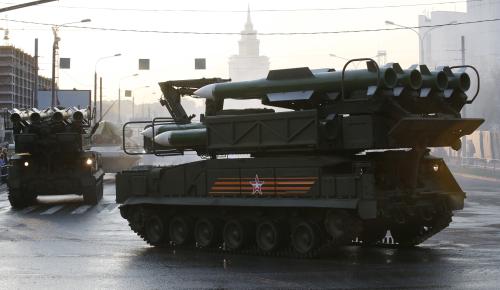
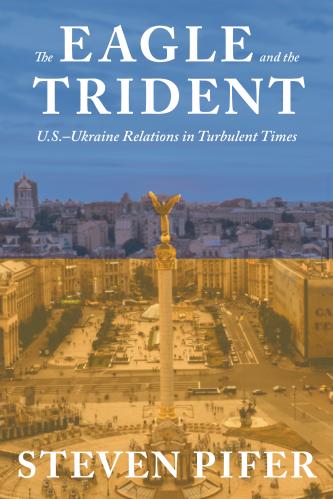

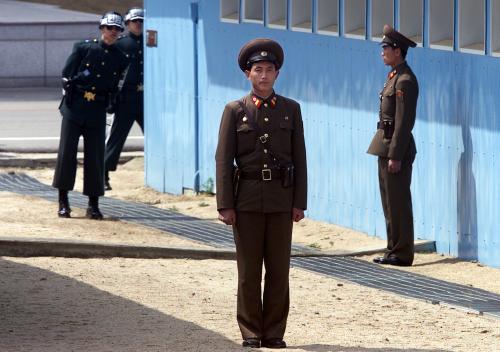
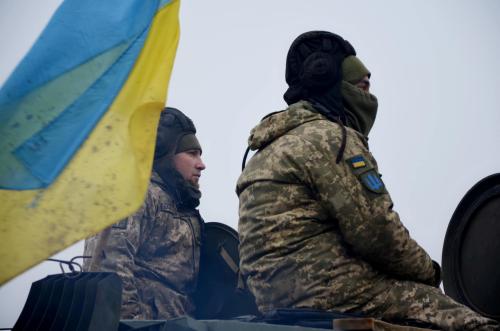
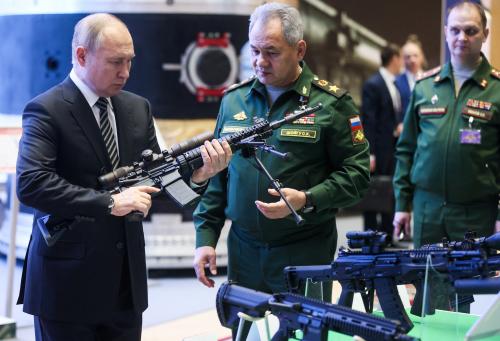
Commentary
TestimonyThe Future of the INF Treaty
January 25, 2018